The Shambles in York is commonly known as one of the best-preserved medieval shopping streets in Europe.
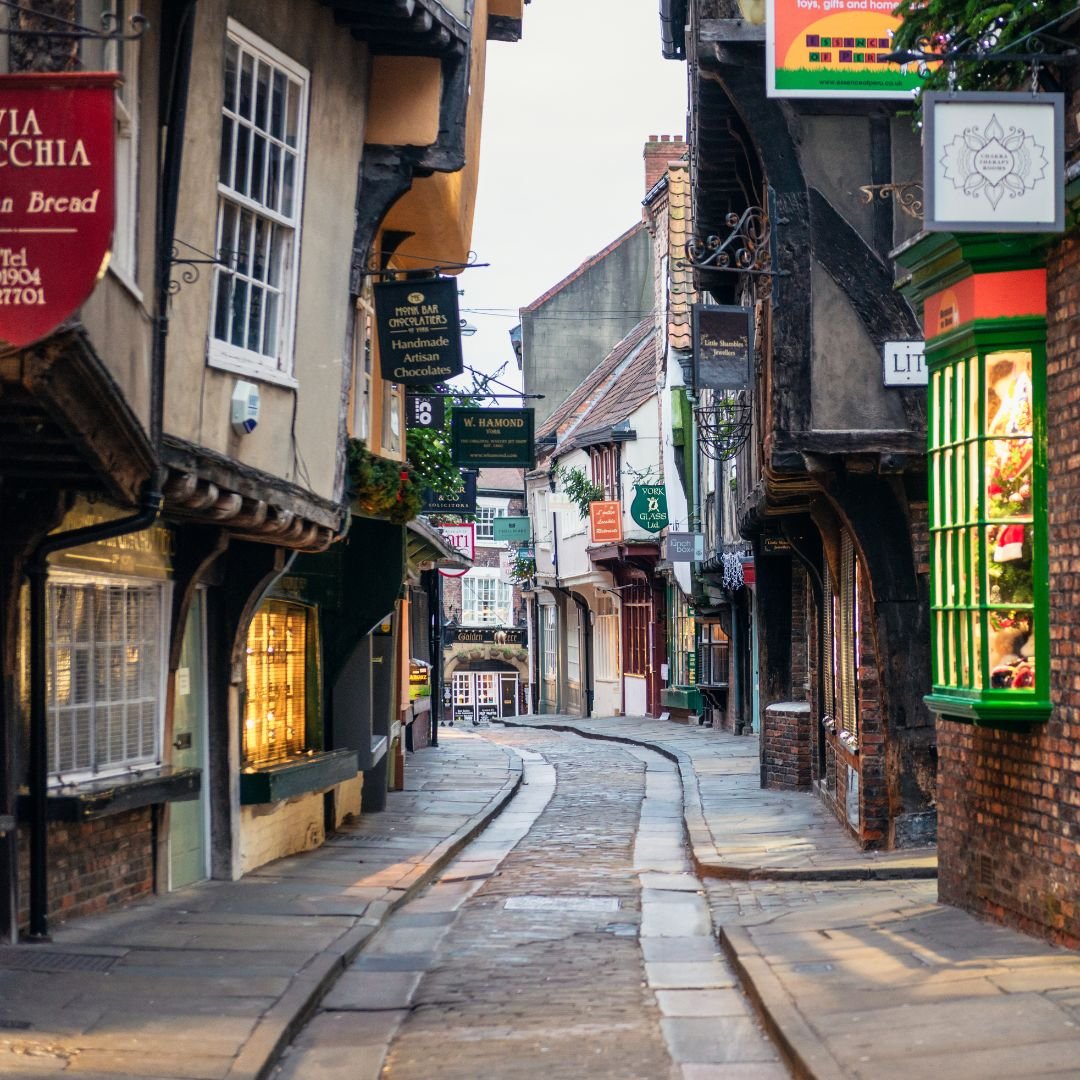
It’s a narrow street of mostly timber buildings that date back as far as the 13th Century.
The street itself is mentioned in the Domesday Book, so we know that it has been in continuous existence for over 900 years.
There are 27 listed building in The Shambles, including 10 listed Grade II* and another 17 listed Grade II.
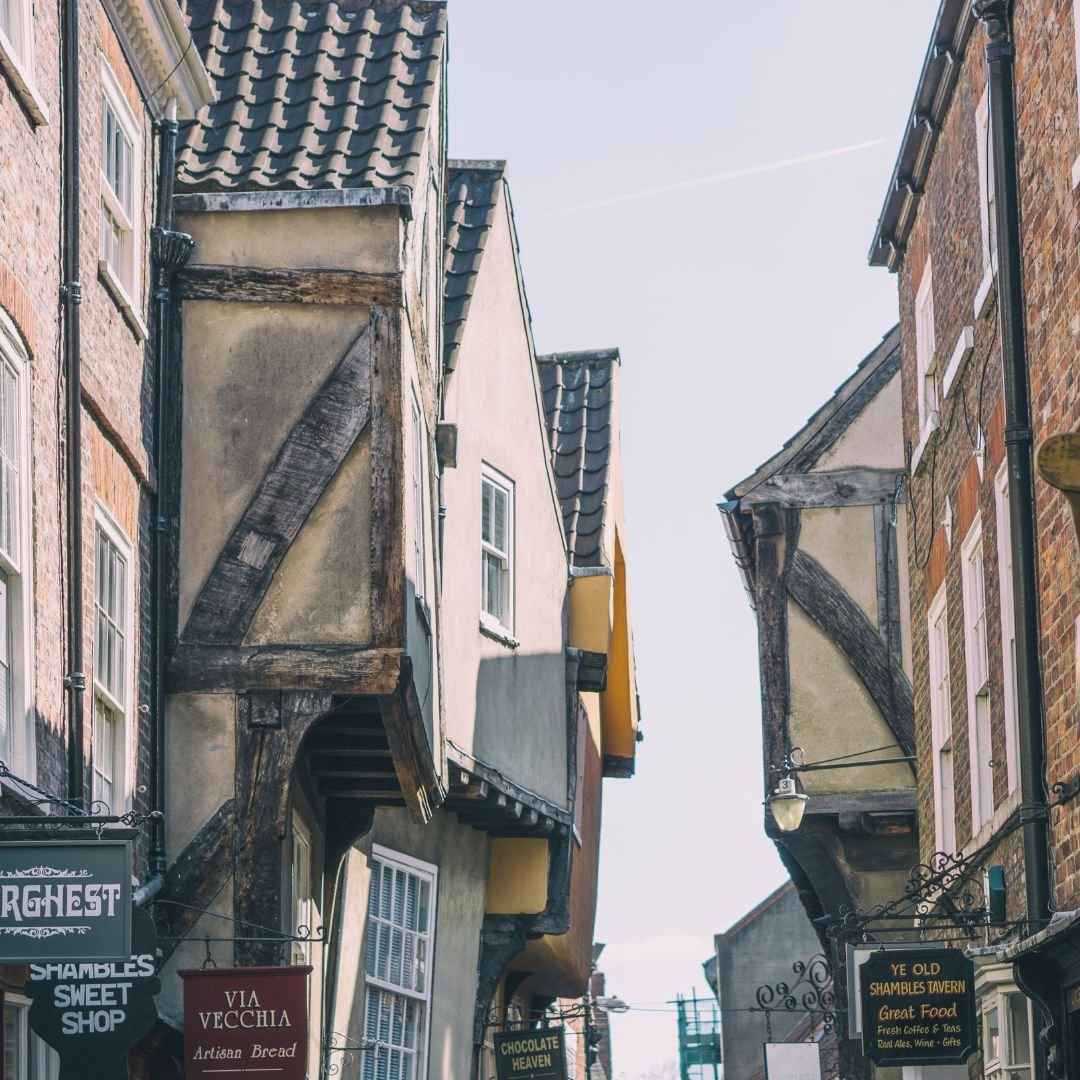
The street was previously named the ‘Most Picturesque Street in Britain’ in the Google Street View Awards for 2010.
More than 11,000 voters selected the Shambles from a shortlist of 51 historic streets selected by a panel of experts.
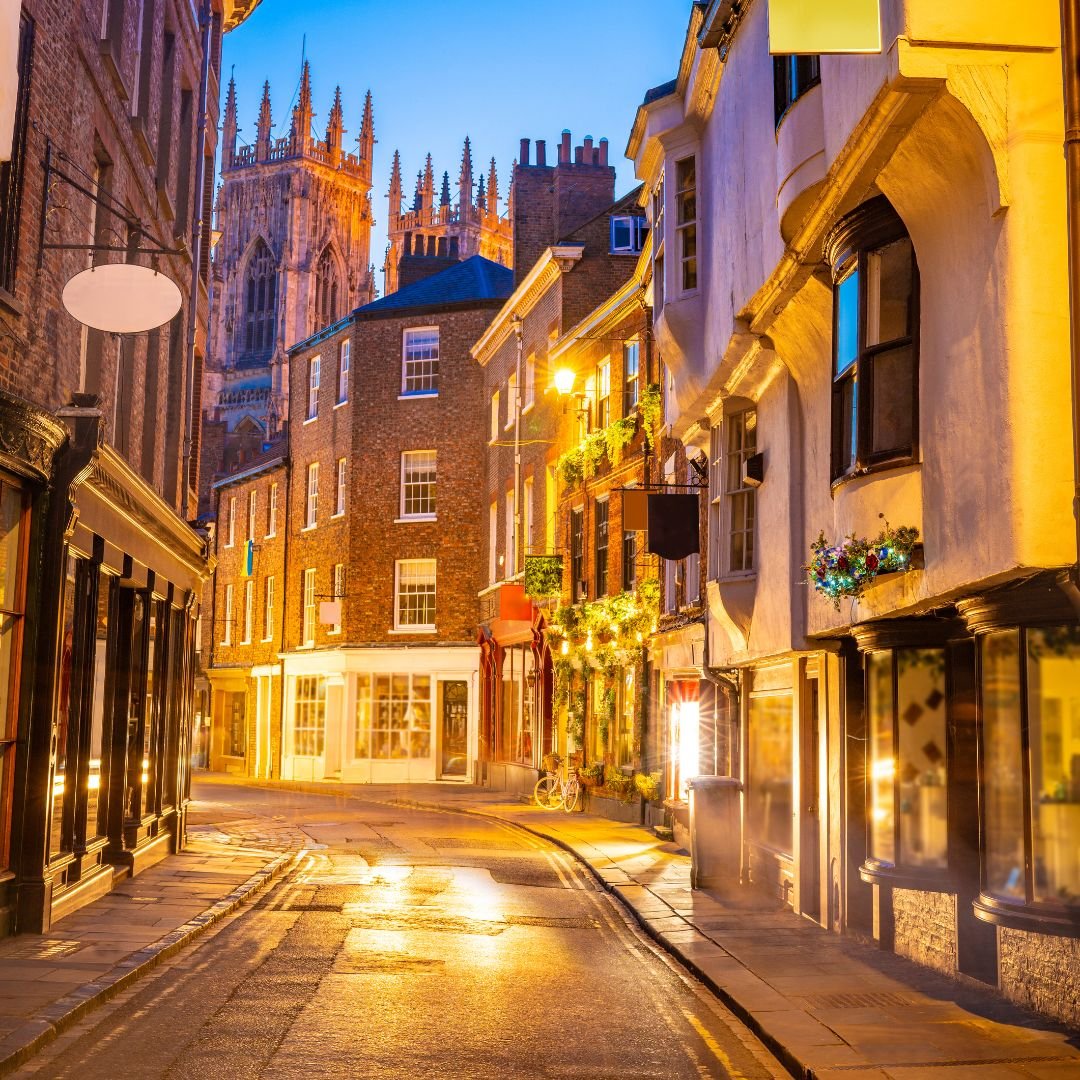
The distinct architecture of The Shambles is a unique blend of medieval and Elizabethan styles.
The overhanging timber-framed buildings create a canopy effect, almost touching at the top and giving the street its unmistakable charm.
The lower floors, once vibrant market stalls, have evolved into quaint shops, tearooms, and boutiques, attracting tourists from around the country.
In certain parts of the Shambles you are able to stand with one hand on either side of the street.
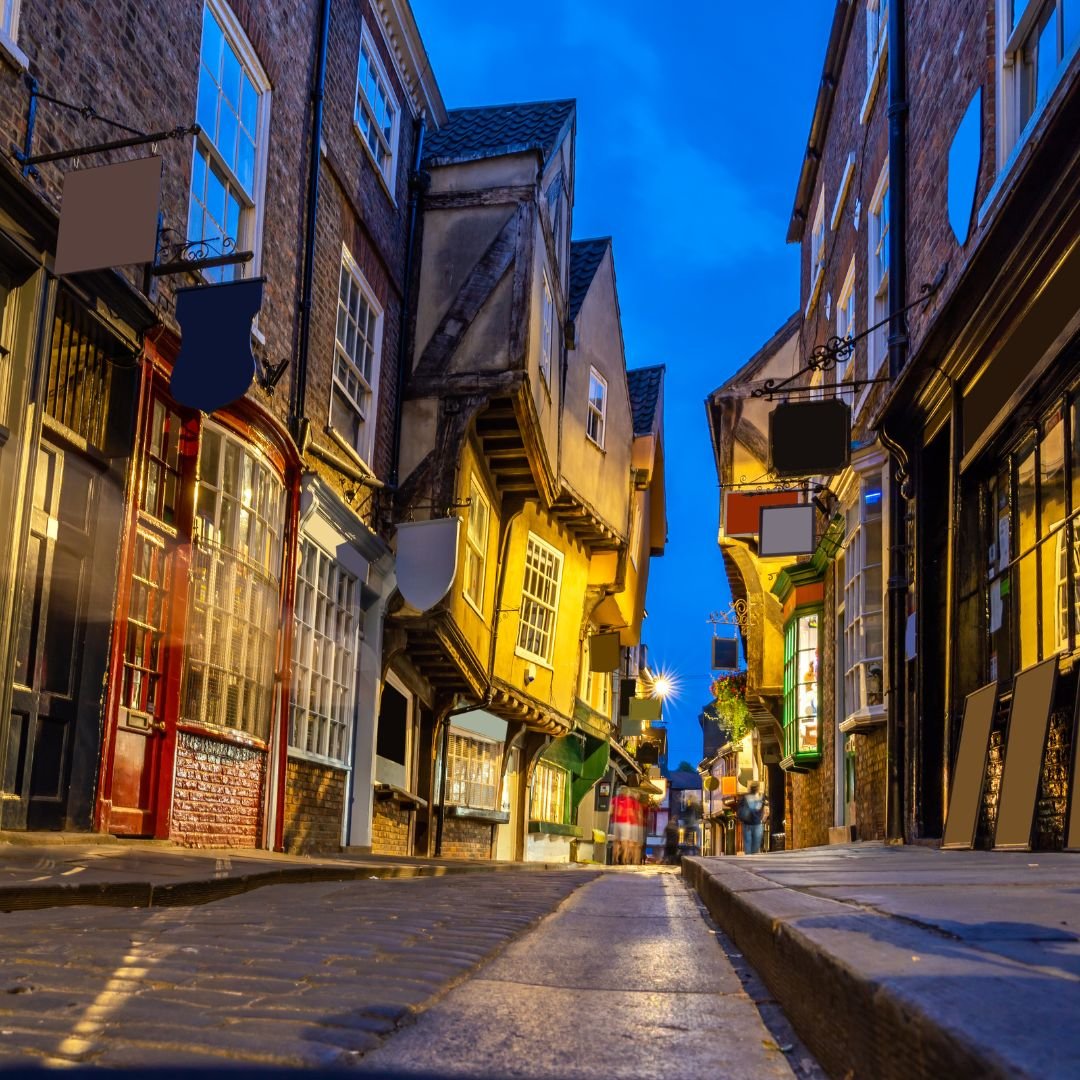
With its cobbled streets and overhanging buildings, it is also believed to have been the inspiration behind Diagon Alley from the movie adaptation of the Harry Potter series.
Although none of the original shop-fronts have survived from medieval times, some properties still have exterior wooden shelves, reminders of when cuts of meat were served from the open windows.
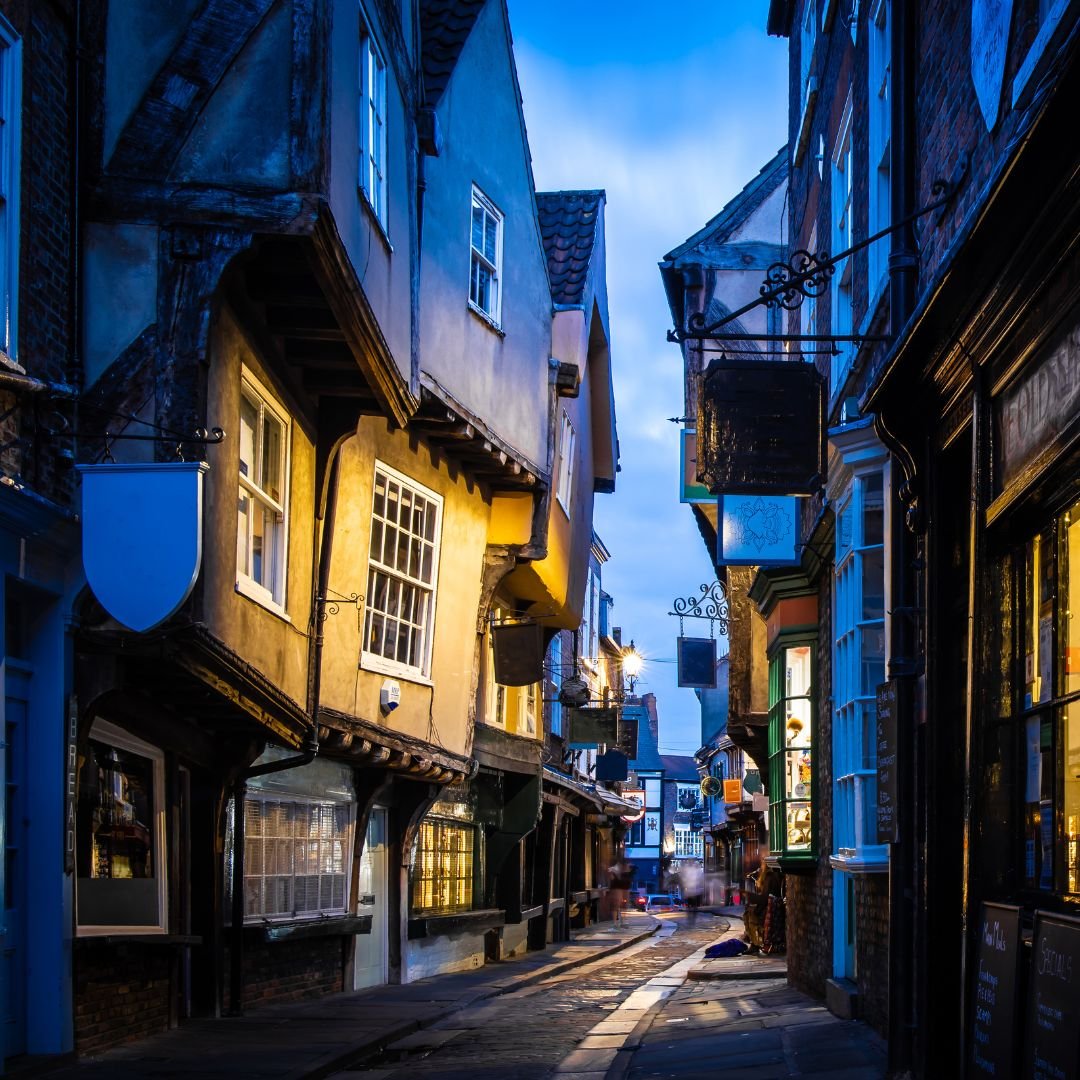
The street was made narrow by design to keep the meat out of direct sunlight, but you can readily imagine the Shambles packed with people and awash with offal and discarded bones.
Lacking modern-day sanitation facilities, there was a constant problem of how to dispose of the waste produced by the slaughter of animals in the city.

The pavements are raised either side of the cobbled street to form a channel where the butchers would wash away their offal and blood twice a week.
The projecting upper storeys had a very practical purpose too; they helped keep the rain off goods laid out for sale in the merchants’ stalls below.
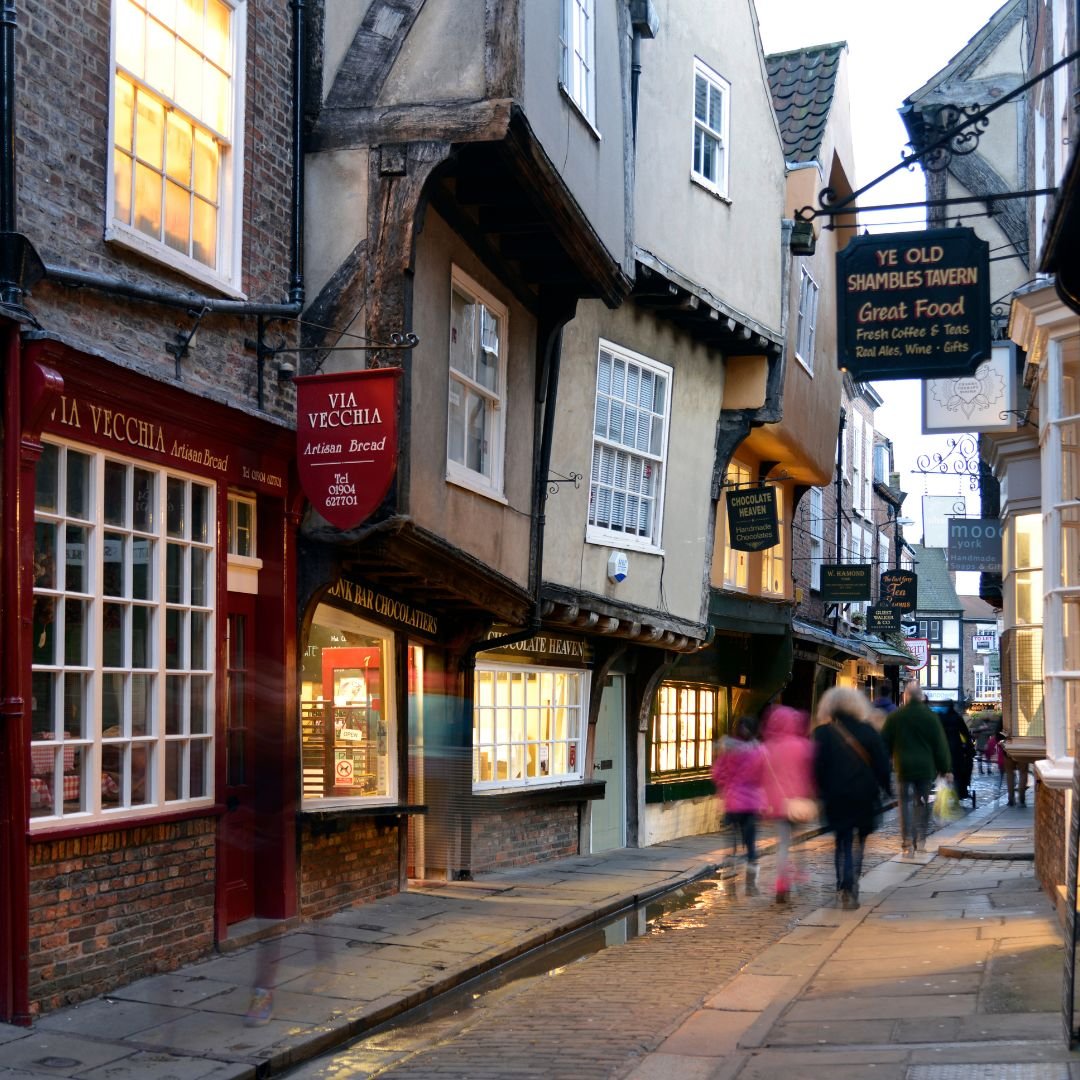
And, of course, they helped provide larger living quarters above the shops without needing to pay for more street frontage.
The name (The Shambles) is thought to derive from ‘Shammel’, an anglo-saxon word for the shelves which were a prominent feature of the open shop-fronts.
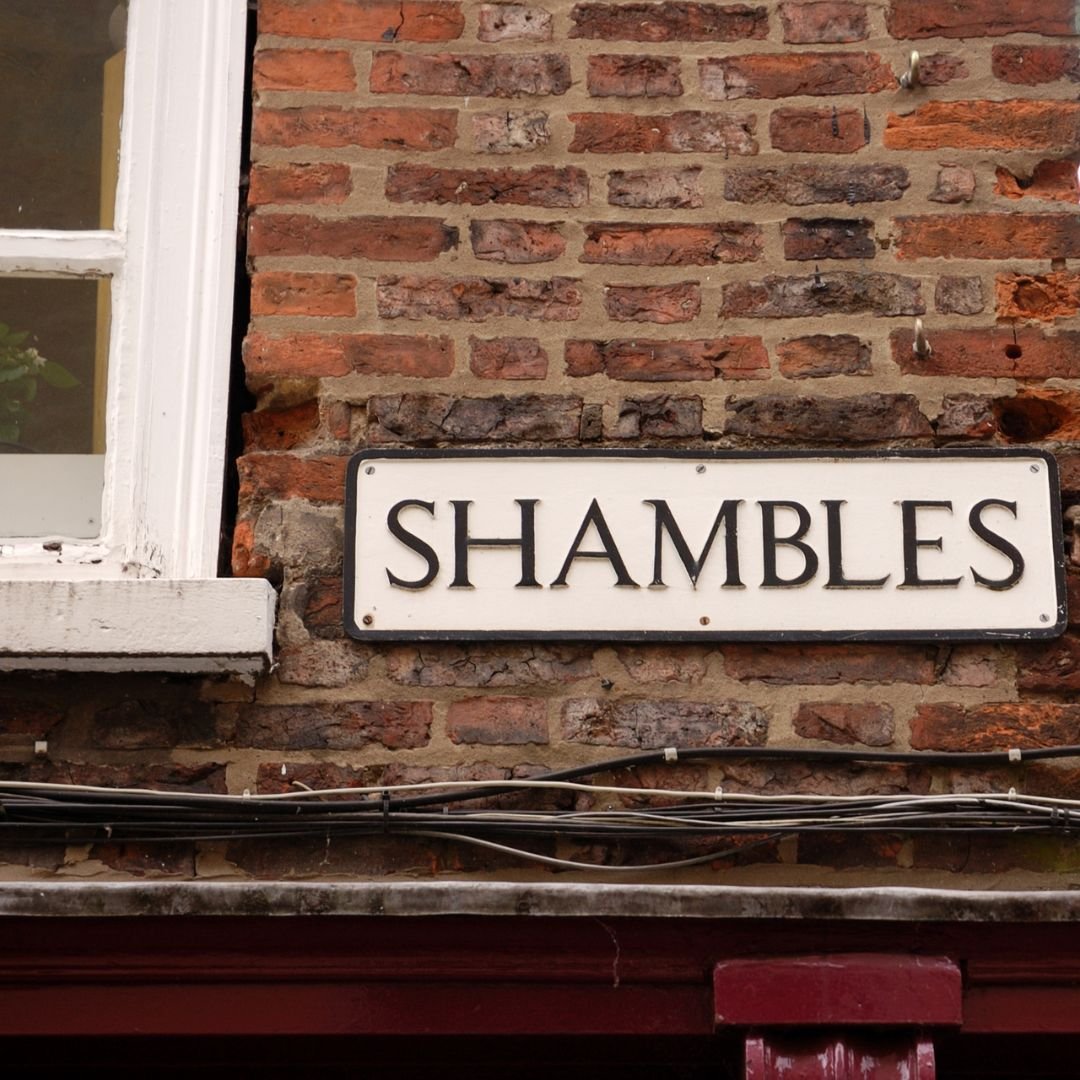
There were originally churches at each end of the Shambles too.
Holy Trinity, King’s Square stood at the western end and St Crux, Pavement at the eastern end.
However, both churches were pulled down, St Crux on 1887 and Holy Trinity in 1936.
If you’re planning a visit, be aware that the Shambles gets very crowded during the day, especially in the summer months.
The Shambles is located in the centre of York, and is a 15-minute walk from the train station.
During your visit to the historic city of York, don’t forget to check out York Minster – one of the world’s most magnificent cathedrals.
York Minster is the largest medieval Gothic cathedral north of the Alps.
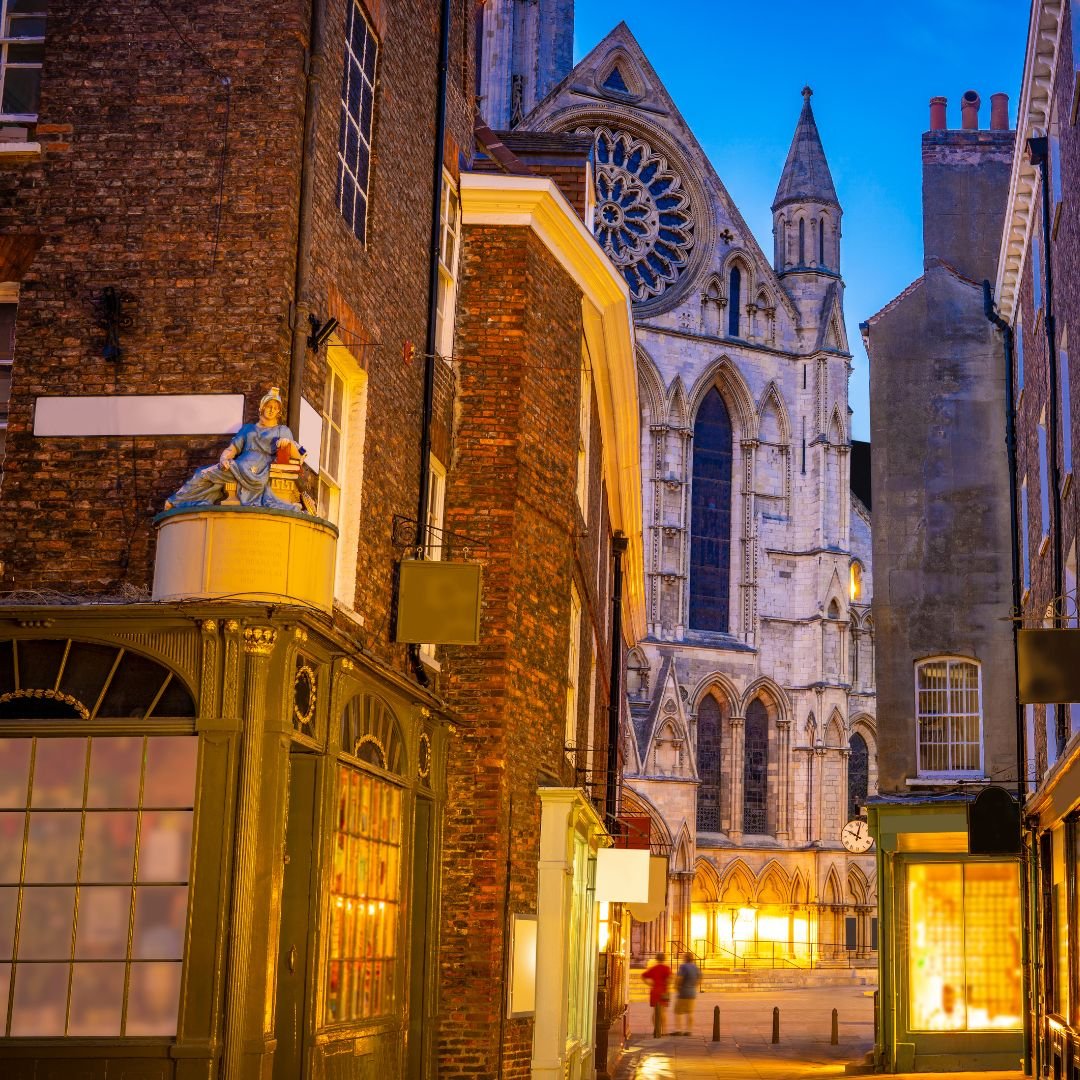
Visitors can also climb the 275 steps passed gothic grotesques to reach the highest point in York – York Minster’s Central Tower – for panoramic views of the city.